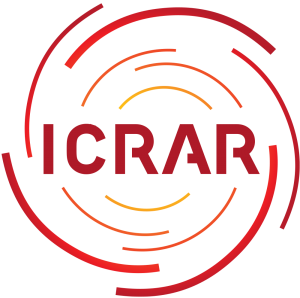Rendezvous Hotel Perth Scarborough
March 18-22, 2019

Credit: Igor Chilingarian
#SFperth19
Rationale
The physical processes driving the evolution of galaxies across the stellar mass vs. star formation rate plane remain elusive. Through decades of multi-wavelength surveys, we have made tremendous progress in characterising the phenomenological properties of galaxies across redshifts. For instance, it is well established that the local galaxy population is mainly bimodal, with star-forming galaxies on one side and passive systems on the other; that galaxies at earlier epochs were forming stars at higher rates than what is observed today, and that passive and active galaxies show clear differences in their stellar structure. However, understanding the physics behind these relations is challenging, partly because of the difficulty of discriminating between simple correlations and physical causation.
An additional level of complication comes from the fact that every physical process invoked to transform a star-forming galaxy into a passive, feature-less one requires at least a few billion years, a time during which even isolated star-forming systems have changed (e.g., grown) significantly. This means that – for example – today’s rotating, star-forming disks cannot be naively assumed to be the progenitors of local passive, dispersion-supported systems. Thus, simply comparing galaxies of different types at fixed redshift and/or at fixed stellar mass is unlikely to provide us with a realistic view of the transformation that they have experienced during their lives. Only by identifying the progenitors of different galaxy populations as a function of time will it be possible to reveal the origin of the heterogeneous population of galaxies that we observe today.
This 5-day workshop sponsored by the ARC Centre of Excellence for All Sky Astrophysics in 3D (ASTRO 3D) and the International Centre for Radio Astronomy Research (ICRAR) will focus on 4 key themes (under the general topic of star formation of galaxies across cosmic age), with the aim of summarizing the state of the field, identifying current challenges and discussing ways forward to make significant progress over the life-time of the ASTRO 3D Centre of Excellence.
The four themes are:
- The role of bulges on star formation: correlation or causation? We know that passive galaxies are mainly bulge dominated and disks are star-forming, but is there solid observational evidence to support the idea that quenching is driven by (or at least related to) bulge formation?
- What regulates the star formation efficiency in galaxies? What is the evidence for a varying star formation efficiency with galaxy properties and redshift? What are the physical drivers? Does this help understanding how galaxies stop forming stars?
- Life in the transition region. Are galaxies in between the blue and red sequences `in transition’? Are they all following the same evolutionary path? Do galaxies cross the transition region only once in their life?
- Are we getting closer to reliable star-formation histories of galaxies? Can we link progenitors and progeny across cosmic time?
We envisage an engaging and lively workshop to discuss the status, challenges and prospects for these specific areas of galaxy evolution. The plan is to have 1-1.5 days focused on each theme, each ending with a discussion/brainstorm to summarize where we are, what we do not understand, what is controversial and how can we make progress in the next few years. Each discussion will be co-led by members of the SOC.
This is meant to be a mid-sized workshop with 60-80 participants (with 100 being the absolute maximum).
Key Dates
- July 2018: First announcement and pre-registration
- September 15th 2018: Abstract submission opens
- November 1st 2018: Abstract submission closes
- December 7th 2018: Program announced
- January 15th 2019: Registration and conference fee payment deadline
You can get in touch with the LOC using this email address: SF19_LOC at icrar.org

